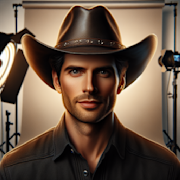Spectacle and Simplicity: The Art of Buster Keaton's Silent Comedy

Buster Keaton, often referred to as “The Great Stone Face,” was a master of silent comedy during the golden age of cinema. His unique blend of physical comedy, deadpan expression, and innovative filmmaking techniques set him apart from his contemporaries and established him as one of the most influential comedians in film history. In this blog post, we will explore the art of Buster Keaton’s silent comedy, focusing on the key elements that made his work so enduringly popular.
The Early Years: Vaudeville Roots and Keaton’s Silent Film Debut
Before making a name for himself in silent film, Buster Keaton honed his craft in vaudeville alongside his parents, who were performers themselves. Keaton’s background in vaudeville provided him with a solid foundation in physical comedy and slapstick, skills that would serve him well in his transition to film.
Keaton made his silent film debut in 1917 with a series of short films produced by Roscoe “Fatty” Arbuckle. It was during this time that Keaton developed his signature deadpan expression and acrobatic physicality, which would become hallmarks of his comedic style.
Innovative Filmmaking Techniques: The Marriage of Spectacle and Simplicity
One of the defining features of Buster Keaton’s silent comedies is his use of innovative filmmaking techniques to create spectacle and humor. Keaton was a master of visual storytelling, often using elaborate stunts and special effects to enhance the comedy in his films.
In films such as “The General” and “Sherlock Jr.,” Keaton pushed the boundaries of what was possible in silent cinema, incorporating complex chase scenes, daring stunts, and intricate set pieces. Despite the technical challenges involved, Keaton managed to maintain a sense of simplicity and elegance in his filmmaking, allowing the physical comedy to take center stage.
The Great Stone Face: Buster Keaton’s Deadpan Expression
One of the most iconic aspects of Buster Keaton’s silent comedy is his deadpan expression, which earned him the nickname “The Great Stone Face.” Keaton’s stoic demeanor served as a perfect foil to the chaos and mayhem happening around him, heightening the comedic effect of his physical comedy.
Unlike many of his contemporaries, who relied on exaggerated facial expressions and gestures to convey humor, Keaton’s subtle and understated approach allowed the audience to project their own reactions onto his character. This minimalist style of performance is a testament to Keaton’s skill as a comedian and actor, showcasing his ability to elicit laughter through sheer physicality and timing.
Legacy and Influence: Buster Keaton’s Enduring Impact on Comedy
Despite the decline of silent cinema, Buster Keaton’s legacy has endured through the decades, influencing generations of comedians and filmmakers. His innovative approach to visual comedy, combined with his unique blend of spectacle and simplicity, continues to inspire artists to this day.
In the world of modern comedy, echoes of Buster Keaton’s distinctive style can be seen in the work of filmmakers such as Wes Anderson and Edgar Wright, who have cited Keaton as a major influence on their own filmmaking. Keaton’s ability to blend physical comedy with emotion and storytelling remains a timeless example of the power of silent film to transcend language and culture.
Conclusion
Buster Keaton’s silent comedies are a testament to the artistry and creativity of one of cinema’s greatest innovators. His unique blend of spectacle and simplicity, coupled with his deadpan expression and innovative filmmaking techniques, set him apart as a true master of silent comedy. As we look back on Keaton’s iconic career, it is clear that his influence will continue to be felt for generations to come, proving that the power of laughter knows no bounds.

Alberto Miller
Movie Fanatic
More From Classics Authority Movies

Movie
Alfred Hitchcocks Leading Ladies: Women Who Defined Classic Suspense

Movie
Fight Club (1999)

Movie
The Femme Fatale in Technicolor: Exploring Vibrant Characters in Classic Film

Movie
Rashomon (1950)

Movie
Classic Spy Movies: Intrigue, Espionage, and High-Stakes Action

Movie
Classic Sports Movies: Inspiring Tales of Triumph and Perseverance





